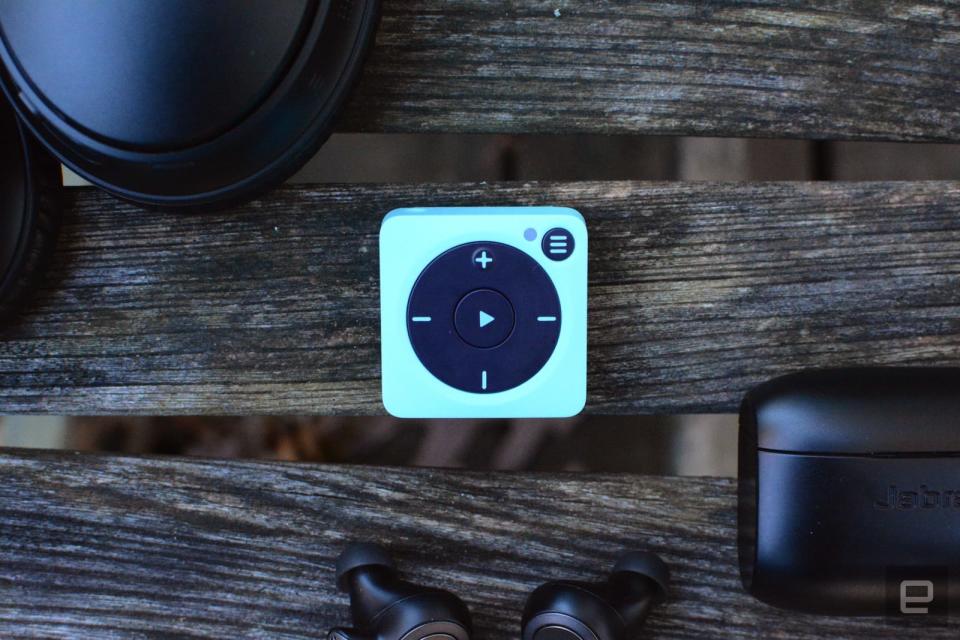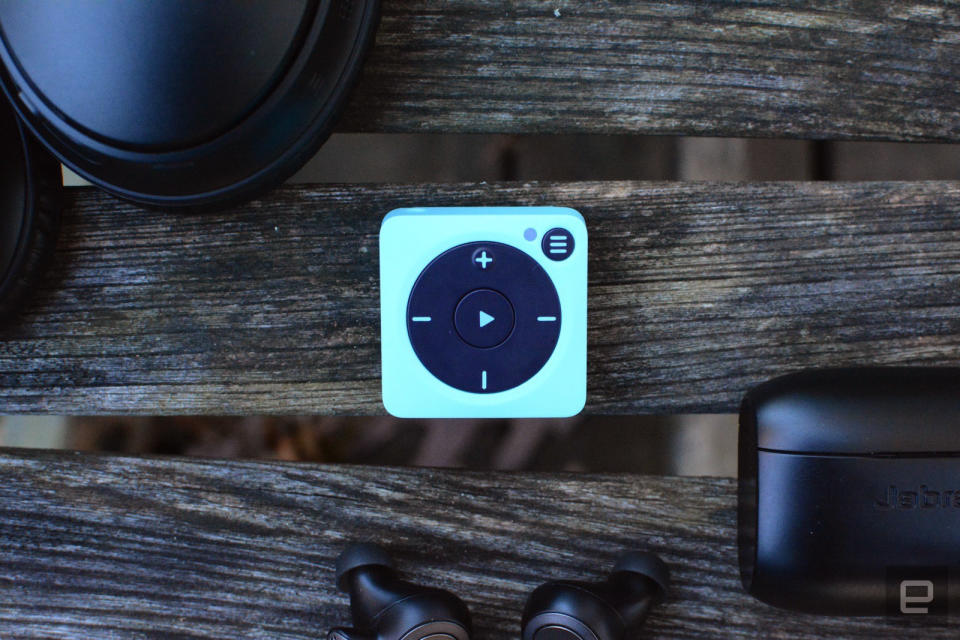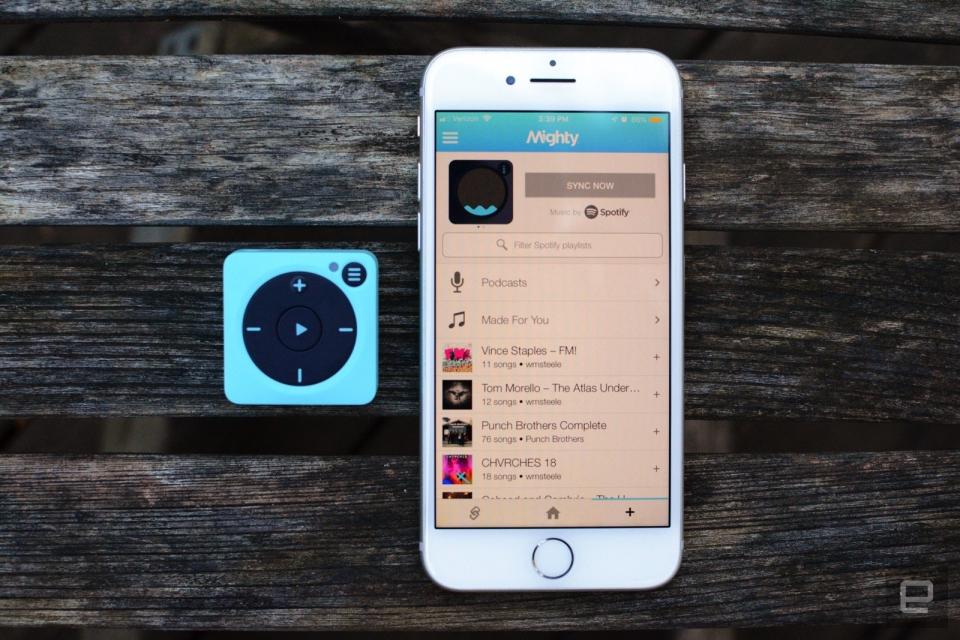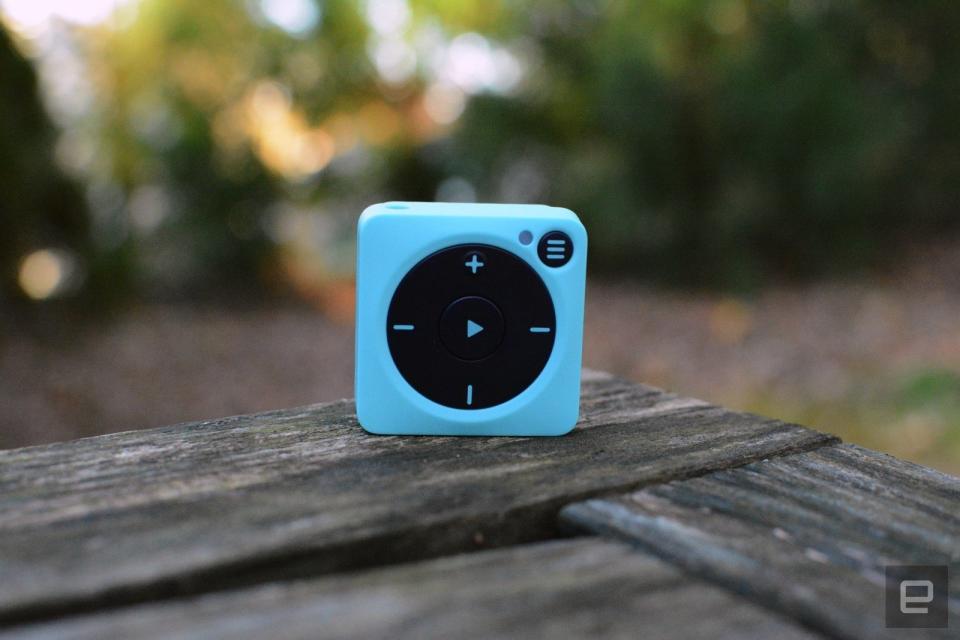Mighty Vibe review: A much improved iPod Shuffle for Spotify
The second-gen model makes some much-needed improvements.
I'll admit it. When Mighty was first announced in 2016, the prospect of a standalone, offline Spotify player was an exciting and attractive concept -- especially for this subscriber. I got my hopes up. Plus, the tiny device was about the size and shape of an iPod Shuffle, so there was some nostalgia at work too. It looked good on paper, but the original model had some major issues. With the second-generation, $86 Mighty Vibe, though, the company has remedied many of those hiccups and created a compelling gadget for Spotify users.
Much like the first version, Mighty Vibe is super easy to set up. Everything is controlled through a mobile app, and once you've connected your Spotify account and the Vibe itself, you're ready to start syncing playlists and podcasts. That whole process takes about five minutes. Once everything is connected, the Mighty app pulls in all of your Spotify playlists and podcasts so you can easily select what you want to load on the device. The software also keeps tabs on your storage space, so you know exactly what you have room for.
When I reviewed the first Mighty, my main issue was Bluetooth range. It was awful. I basically had to clip the tiny music player onto my shirt collar or keep it right beside the wireless headphones I had it paired with. Anytime I tried to put Mighty in my pocket at the gym or for a run, the signal would cut out. Calling it frustrating is an understatement. Naturally, wireless range was the first thing I tested with the new Mighty Vibe, and I'm happy to report that it's much improved. I can not only actually put it in my pocket but also leave it clipped onto my gym bag while I refill a water bottle across the room. Ditto for leaving it on my desk while I venture into the kitchen. Bluetooth range has gone from the biggest headache on the original Mighty to one of the biggest strengths on Mighty Vibe.

Mighty Vibe is also much better at remembering Bluetooth devices you've paired with it. That first model required you to go through the whole setup on a regular basis to pair headphones and speakers, even if you'd used them with the music player before. Thus far, the Vibe has done a much better job automatically connecting with my Jabra Elite 65t earbuds. It may not sound like a huge deal, but trust me, having these things connect automatically when you turn them on makes using them way more enjoyable.
Last, there's battery life. Mighty promised around five hours of playback on the first unit, but the actual results were inconsistent. Sometimes I'd hit that mark, but other times it would be much closer to three or four hours on a charge. Thankfully, battery performance is much better on the Vibe. Five hours, even with wireless headphones, is the norm rather than the exception. It's more than enough to get me through a few workouts before I have to plug it in.

After the release of the first Mighty, the company regularly released updates that added handy features to the device. The lack of a true shuffle option was a glaring omission at launch, but it arrived a few months after. The ability to sync Spotify podcasts came earlier this year. Mighty has a solid track record of updates and plans to continue to push out more now that the Vibe is on sale as well. The company has things like EQ settings and spoken artist and track names in the works, so you can expect the features to keep rolling out in the months to come.
My initial excitement for an "iPod Shuffle for Spotify" waned after I reviewed that first Mighty, largely due to the list of items that made it a burden to use. However, the company has addressed many of those directly with the updates present on the Vibe. Now the company actually has the compelling product I'd hoped for from the jump. Sure, you could just use the music service's own offline playback tools and save the cash, but at less than $100, Mighty Vibe is a worthy investment for active folks and people who would rather leave their phone behind at times when music remains essential.

















